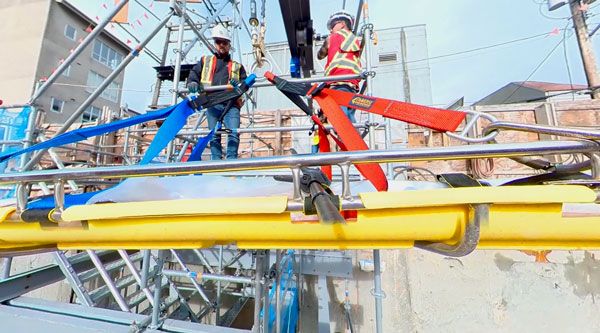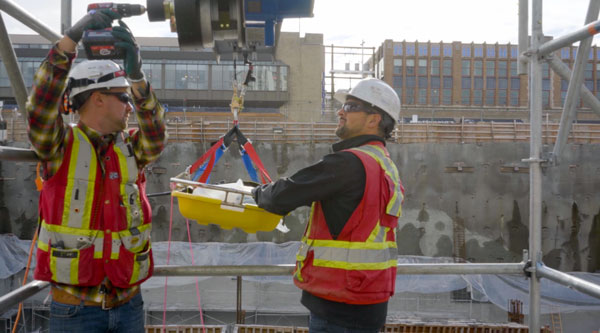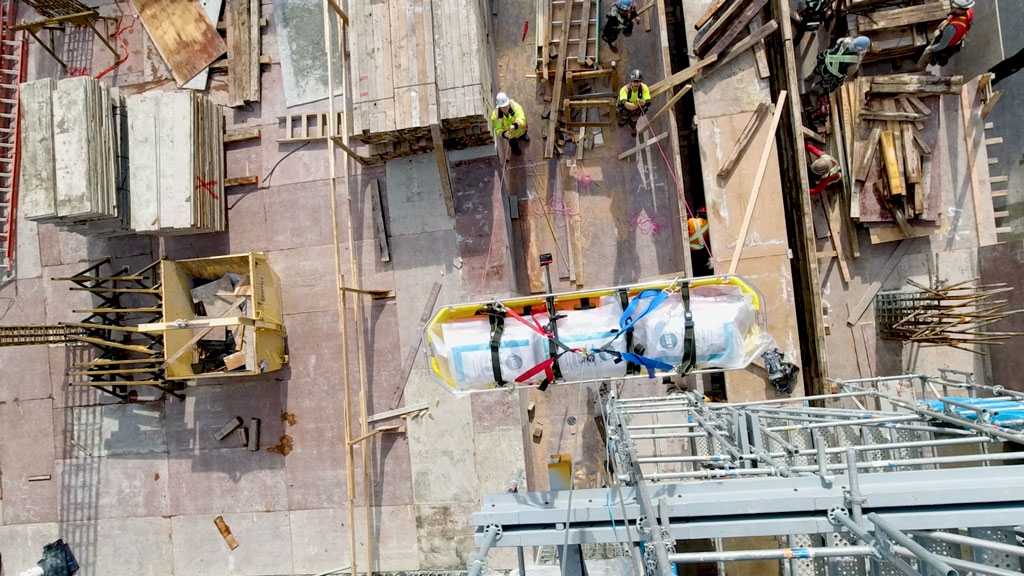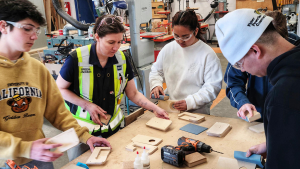Improving safety on construction sites is everyone’s business.
Ledcor Group recently won the Construction Workplace Health and Safety Innovation award presented by the Vancouver Regional Construction Association for their excavation extraction rescue system (EERS).
The system is designed to safely and quickly remove injured people from excavation sites.
“It was a great effort by many of the project safety co-ordinators, which is our frontline first aid and safety people, that were instrumental in the development,” said Ledcor safety supervisor Michal Turner about the award.
Being celebrated by their peers for safety innovation was assuring for the Ledcor crew.
“It’s kind of nice to show that what we were thinking of was actually valuable and that there was a grey area and a gap.”
The EERS uses an overhead beam that is mounted to the scaffold stairs with a winch and a self-retracting lanyard attached.

“The stair tower was attractive because you always have a scaffold stair tower for personnel access,” said Turner.
At the end of the beam is a winch with a rescue basket attached to a self-retracting lanyard. The self-retracting lanyard was an essential addition, said Turner.
“Whenever you’re moving a patient you need to have a backup system because if there’s any kind of catastrophic failure to your initial system you can’t leave someone suspended,” he said.
Using a manual lever or a cordless drill, the basket can be raised and lowered while two people on the ground use ropes to ensure the basket doesn’t rotate. A slider on the beam allows the winch and basket to be extended and retracted.
The winch system was originally a swing stage motor but the Ledcor team soon realized the motor would be vulnerable to power failures. So once again they decided to innovate.
They implemented a winch system that has a coupling for a hand drill, meaning the basket can be lowered and raised using only a cordless drill. If there isn’t a charged power drill handy the basket can also be moved by good old fashioned manual labour.
For Turner and health and safety manager Mike de Jong, the importance of creating this system was to address what they perceived as a safety gap in excavation construction.
Generally, injured personnel in a deep excavation would be quickly removed by the onsite crane.
But a crane can only be built once the excavation has reached its maximum depth, meaning there is an extended time period where the only way to remove a patient is through a dangerous, exhausting and time-consuming climb up the narrow, winding stair tower.

Turner and de Jong performed practice drills and discovered “it was too difficult to take a spine board and a cage with a patient (up the stair tower) and turn the tight corners and everything, never mind at an excavation of 130 feet,” said Turner.
Not only does the new system cover the gap between the excavation’s beginning and a crane going up, it also ensures people can be rescued in the event a crane operator is not available.
“So, this system now provides that means of rescue if we are not operating the Tower Crane during off hours or on weekends,” said de Jong.
A further benefit to having the system in place is that there is a dedicated emergency rescue platform already set up.
Turner said it is essential for general contractors to take safety precautions into their own hands and not only rely on emergency services to help.
De Jong said the system has been expensive to develop. Work began on it in 2016.
He said the superintendents he and Tuner initially discussed the project with were a little nervous about the development price tag. So, the pair took a practical approach to demonstrating why they thought the project was worthwhile.
“We said, ‘OK well, let’s take a patient up a set of stairs,’” de Jong said.
A group of superintendents and de Jong and Turner then simulated, basket and all, the job of carrying an injured person out of a deep excavation.
“Within a matter of 10 minutes of trying it they go, ‘We can’t do this.’ I go, ‘OK, you’re the patient. Now, how do you want us to get you out?’”
The new system is not only easier to operate but is safer as well, de Jong said.
It means the patient is not at risk of further injury from being carried at a sloped angle and tossed around due to the sharp corners in a stair tower, a major hazard for anyone with a neck or spine injury.
Safety is paramount in construction and is one of Ledcor’s most important philosophies, said de Jong.
“It becomes a matter of managing patient lives,” he said.
Ledcor is actively sharing the design to anyone who reaches out to them and is helping ensure companies and contractors know how it functions.
“From a prime contractor’s perspective, we often compete against (each other) for projects and stuff. But when it comes to safety work, we’re a very collaborative group,” de Jong said.
“There is nothing about managing patients that should be kept industry secret from each other.”
De Jong said they invited industry peers and WorkSafeBC to a site to demonstrate the EERS and ensure other industry professionals knew how to make their sites safer.
“Our safety philosophy is share everything, patent nothing,” Turner said.
Follow the author on Twitter .











Recent Comments
comments for this post are closed